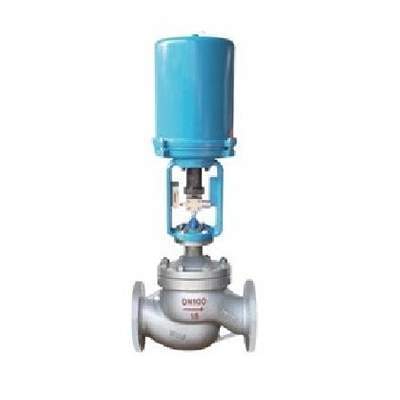Welcome to My Blog!
Before we dive into the content, I’d love for you to join me on my social media platforms where I share more insights, engage with the community, and post updates. Here’s how you can connect with me:
Facebook:https://www.facebook.com/profile.php?id=61563865935136
Now, let’s get started on our journey together. I hope you find the content here insightful, engaging, and valuable.
Introduction

In the intricate world of industrial automation, the pneumatic control valve stands as a pivotal component. These valves are essential for regulating fluid flow, pressure, and temperature within various systems, ensuring optimal performance and efficiency. Understanding the nuances of pneumatic control valve technology is crucial for businesses aiming to streamline operations and reduce costs. This blog post delves into the secrets of enhancing efficiency through the proper selection, maintenance, and application of pneumatic control valves. We’ll explore various aspects, from the fundamental principles to advanced troubleshooting techniques, providing you with actionable insights to optimize your industrial processes.
Understanding the Fundamentals of Pneumatic Control Valves
The core function of a pneumatic control valve is to control the flow of fluids, gases, or other materials by varying the size of the flow passage. This control is achieved through the use of compressed air, which actuates the valve mechanism. These valves are widely used in industries such as manufacturing, chemical processing, and oil and gas due to their reliability and precision.
Key Components and Their Functions
- Actuator: The component that converts pneumatic energy into mechanical motion.
- Positioner: A device that ensures the valve stem reaches the desired position.
- Valve Body: The main structure of the valve, containing the flow passage.
- Trim: The internal components of the valve, including the plug and seat, which directly control the flow.
Types of Pneumatic Valves
- Globe Valves: Ideal for throttling and precise flow control.
- Ball Valves: Suitable for on/off control and high-flow applications.
- Butterfly Valves: Cost-effective for large-diameter pipes and low-pressure applications.
- Diaphragm Valves: Used for corrosive or abrasive fluids.
Selecting the Right Pneumatic Control Valve for Your Application
Choosing the appropriate pneumatic valve is paramount for achieving optimal performance. Several factors must be considered during the selection process.
Determining the Required Flow Capacity
The flow capacity of a pneumatic valve is typically measured by its flow coefficient (Cv). It is crucial to select a valve with a Cv value that matches the required flow rate of your system. An undersized valve can restrict flow, while an oversized valve can lead to instability and poor control.
Considering the Operating Pressure and Temperature
The operating pressure and temperature of the fluid are critical factors in selecting a pneumatic control valve. The valve material and design must be compatible with the specific operating conditions to prevent damage or failure.
Evaluating the Fluid Characteristics
The properties of the fluid being controlled, such as viscosity, corrosiveness, and abrasiveness, must be considered. Special materials and designs may be required for handling challenging fluids.
Optimizing Performance Through Proper Installation and Maintenance
Proper installation and regular maintenance are essential for maximizing the lifespan and efficiency of pneumatic valves.
Installation Best Practices
- Ensure proper alignment of the valve and piping.
- Use appropriate gaskets and seals to prevent leaks.
- Install a filter upstream of the valve to remove contaminants.
- Ensure proper support is provided to the valve and piping.
Regular Maintenance Procedures
- Inspect the valve for signs of wear or damage.
- Clean or replace filters and strainers.
- Lubricate moving parts to prevent seizing.
- Calibrate the positioner to ensure accurate control.
- Perform leak checks.
Advanced Techniques for Enhancing Pneumatic Control Valve Efficiency
Beyond basic maintenance, several advanced techniques can further enhance the efficiency of pneumatic control valves.
Utilizing Smart Positioners
Smart positioners provide advanced diagnostic capabilities and can optimize valve performance. They can monitor valve position, air supply pressure, and other critical parameters, providing valuable insights for predictive maintenance.
Implementing Predictive Maintenance Strategies
Predictive maintenance involves using data and analytics to anticipate potential failures and schedule maintenance proactively. This approach can minimize downtime and extend the lifespan of pneumatic valves.
Optimizing Air Supply Systems
A clean and consistent air supply is crucial for the proper functioning of pneumatic valves. Optimizing the air supply system by using filters, regulators, and lubricators can improve valve performance and reliability.
The Role of Pneumatic Control Valves in Industrial Automation

Pneumatic control valves play a vital role in industrial automation systems, enabling precise control and efficient operation.
Integrating Pneumatic Valves with PLC Systems
Programmable logic controllers (PLCs) can be used to automate the operation of pneumatic valves, enabling precise control and integration with other system components.
Enhancing Process Control Through Feedback Loops
Feedback loops, using sensors and controllers, can be used to continuously monitor and adjust pneumatic valve positions, ensuring optimal process control.
Conclusion
Pneumatic control valves are indispensable components in industrial automation, offering precise control and efficient operation. By understanding their fundamentals, selecting the right valves, implementing proper maintenance, and utilizing advanced techniques, businesses can significantly enhance their operational efficiency. Optimizing the performance of these crucial devices translates to reduced downtime, improved productivity, and cost savings.
Investing in high-quality pneumatic control valves and adhering to best practices ensures reliability and longevity. Explore our comprehensive range of pneumatic control valves today and experience enhanced operational efficiency.
FAQ
What is the primary function of a pneumatic control valve?
The primary function of a pneumatic valve is to regulate the flow of fluids, gases, or other materials by varying the size of the flow passage.
How do I select the right pneumatic control valve for my application?
Consider factors such as flow capacity, operating pressure and temperature, and fluid characteristics.
What are some common issues with pneumatic control valves?
Common issues include leaks, actuator and positioner problems, and valve sticking or seizing.
How often should pneumatic control valves be maintained?
Maintenance frequency depends on the operating conditions and application. Regular inspections and preventive maintenance are recommended.
